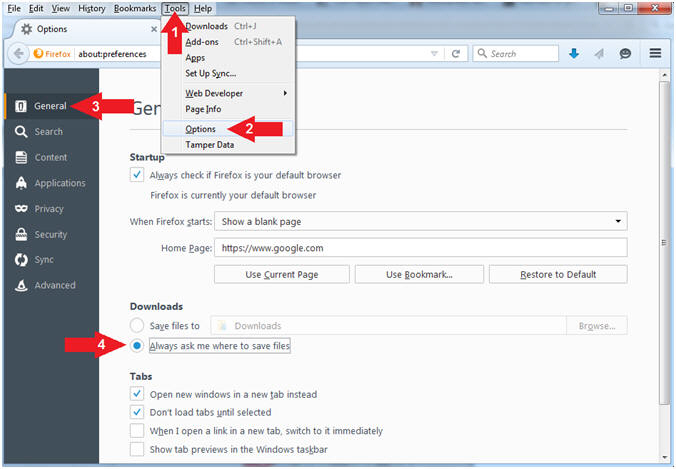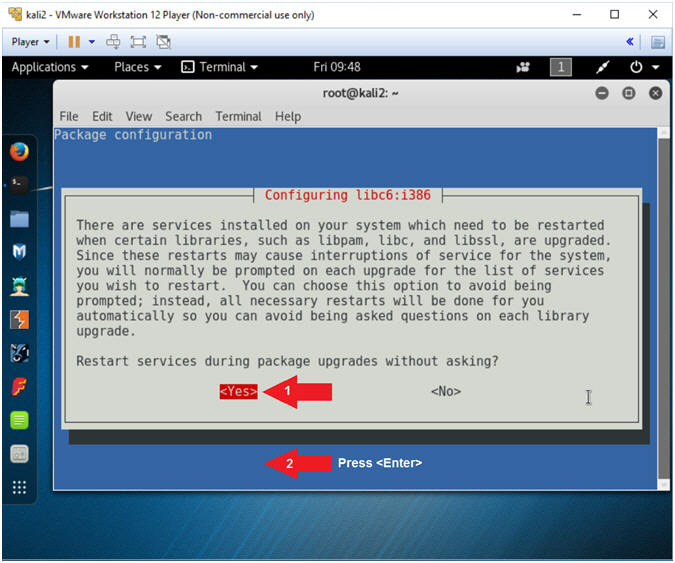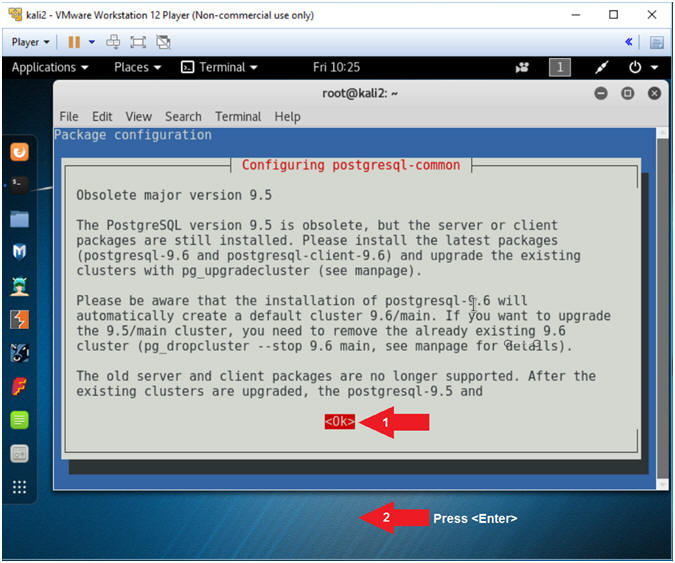(Kali
Rolling Edition:
Lesson 1)
{ Installing Kali Rolling
Edition }
|
Section 0. Background
Information |
- What is Kali
- Kali Linux is a Debian-based Linux
distribution aimed at advanced Penetration Testing and Security
Auditing. Kali contains several hundred tools which are geared towards
various information security tasks, such as Penetration Testing,
Security research, Computer Forensics and Reverse Engineering. Kali
Linux is developed, funded and maintained by Offensive Security.
-
http://docs.kali.org/introduction/what-is-kali-linux
-
Lab Notes
- In this lab we will do the following:
- Download the Kali Rolling Edition ISO.
- Create a VMware Virtual Machine using
the Kali Rolling Edition ISO.
- Update the Package Repository
- Perform a Full Upgrade
- Install Open VMware Tools for virtual
machines
- Legal Disclaimer
- As a condition of your use of this Web
site, you warrant to computersecuritystudent.com that you will not use
this Web site for any purpose that is unlawful or
that is prohibited by these terms, conditions, and notices.
- In accordance with UCC § 2-316, this
product is provided with "no warranties, either express or implied." The
information contained is provided "as-is", with "no guarantee of
merchantability."
- In addition, this is a teaching website
that does not condone malicious behavior of
any kind.
- You are on notice, that continuing
and/or using this lab outside your "own" test environment
is considered malicious and is against the law.
- © 2017 No content replication of any
kind is allowed without express written permission.
|
Section 1. Download
Kali ISO |
- Open Firefox
- Instructions:
- Type
firefox in the
search box
- Click the Mozilla Firefox icon

- Save Files Configuration Location
- Instructions:
- Click Tools
- Click Options
- Click the General Tab
- Click the radio button Always ask me
where to save files
- Note(FYI):
- This is optional. The goal is to make
you aware of your file download location.

- Start the Kali 2016.x Download
- Instructions:
- Navigate to the following
download URL
- https://www.kali.org/downloads/
- Click on ISO next to Kali Linux 32 Bit
- Click the Save File Radio Button
- Click the OK Button
- Note(FYI):
- I choose Kali Linux 32 Bit instead of 64
Bit, because I experienced less issues involving VMWare Tools and Linux
Headers in the 32 bit version.

|
Section 2. Create a
New Virtual Machine |
- Open VMware Player on your windows machine.
- Instructions:
- Type "vmware" in the search box
- Click on VMware Workstation 12 Player

- Create a New Virtual Machine. (See Below)
- Instructions:
- Click on Home
- Click on Create a New Virtual Machine

- Installation Media
- Instructions:
- Select the radio button "Installer disc
image file (iso):"
- Click the Browse Button.
- Navigate to where your Kali iso is
located and select it.
- Click Next

- Select a Guest Operating System
- Instructions:
- Guest operating system: Linux
- Version: Debian 8.x
- Select Next

- Name the Virtual Machine
- Instructions:
- Virtual machine name:
kali2
- Location:
Accept or Provide storage location
- E.g., C:\Users\student\Documents\Virtual Machines\kali2
- Click the Next Button
- Note(FYI):
- Step #2, Please save the Kali VM
where ever you desire.

- New Virtual Machine Wizard
- Instructions:
- Maximum disk size (GB): For our purposes use
40GB.
- Radio Button: Store virtual disk
as an single file
- Select Next
- Note(FYI):
- Step #1, I choose 40GB instead
of 20GB, because future forensics lessons might require some extra
space.

- Customize Hardware
- Instructions:
- Click on the "Customize Hardware..."
button

- Configure Memory Settings
- Instructions:
- Click on Memory (which is highlighted
in blue)
- Make sure
1024 MB is selected.

- Configure Network Adapter Settings
- Instructions:
- Click on Network Adapter (which is highlighted
in blue)
- Select Bridged: Connected directly to
the physical network
- Click on the Close Button

- Click on the Finish button.
- Instructions:
- Click the Finish button

|
Section 3. Start
Installation |
- Start the Kali VM
- Instructions:
- Click on the kali2 VM
- Click on Play virtual machine

- Kali Linux Boot Menu
- Instructions:
- Arrow Down to
Graphical Install
- Press <Enter>

- Select a Language
- Instructions:
- Click on English
- Click the Continue Button

- Select your location
- Instructions:
- Click on United States
- Click the Continue Button

- Select the keyboard
- Instructions:
- Click on American English
- Click the Continue Button

- Provide Hostname
- Instructions:
- Hostname:
kali2
- Click the Continue Button

- Provide Domain Name
- Instructions:
- Domain name: Leave this blank, unless
you can provide a domain name.
- Click the Continue Button

- Set up users and passwords
- Instructions:
- Root password: Provide a password
- Re-Enter Root password to verify:
Provide the same password
- Click the Continue Button

- Configure the clock
- Instructions:
- Select your time zone (E.g., Central)
- Click the Continue Button

- Select Partition Option
- Instructions:
- Click on Guided - use entire disk
- Click the Continue Button

- Select disk to partition
- Instructions:
- Click on the disk (See picture)
- Click the Continue Button

- Partitioning Scheme
- Instructions:
- Click on "All file in one partition
(recommended for new users)"
- Click the Continue Button

- Partition Overview
- Instructions:
- Click on "Finish partitioning and
write changes to disk"
- Click the Continue Button

- Write the changes to disks?
- Instructions:
- Click the Yes radio button
- Click the Continue Button

- Install the system
- Note(FYI):
- This will take about 15 to 30 minutes.

- Use a network mirror?
- Instructions:
- Click the
Yes radio button
- Click the Continue Button

- Configure the package manager
- Instructions:
- HTTP Proxy information: Just leave this
blank
- Click the Continue Button

- Install the GRUB boot loader on a hard disk
(Part 1)
- Instructions:
- Click the Yes radio button
- Click the Continue Button

- Install the GRUB boot loader on a hard disk
(Part 2)
- Instructions:
- Select /dev/sda
- Click the Continue Button

- Supply Username
- Instructions:
- Username:
root
- Click the Next Button

- Supply Password
- Instructions:
- Password: Provide the root password
- Click the Sign In Button

- Virtual Machine Settings
- Instructions:
- Player --> Manage -->
Virtual Machine Settings...
- Note(FYI):
- We will un-mount or eject the CD/ISO
because we no longer need it.
- If you still have a CD/DVD Drive on
your host machine they tray might actually open.

- CD/DVD Settings
- Instructions:
- Highlight
CD/DVD (IDE)
- Select Connection: Use physical drive
radio button
- Click the OK button

|
Section 6. Configure
Terminal Colors |
- Open Terminal
- Instructions:
- Applications --> Terminal

- Terminal Profile Preferences
- Instructions:
- Edit --> Profile Preferences

- Select Text and Background Colors
- Instructions:
- Click the Colors tab
- Built-in schemes: Black on white
- Un-Check Transparent background
- Click the x to close
- Note(FYI):
- This is optional. However, if your
are a Hac-King-Do student, it allows our instructors to clearly view
your future screen shot submissions.

|
Section 7. Kali
Update and Upgrade |
- Update Kali Repository
- Instructions:
-
apt-get
update
-
Note(FYI):
- Arrow #1:
apt-get is the
command-line tool for handling packages
- Arrow #1: The (update)
option is used to resynchronize the package index files from their
sources. The indexes of available packages
are fetched from the location(s) specified in /etc/apt/sources.list

- Perform Kali Full Upgrade
- Instructions:
-
apt-get
-y
full-upgrade
-
Note(FYI):
- This will take between 45 to 60 minute until you see the
wireless screenshot in the following step.
- Arrow #1: (apt-get)is
the command-line tool for handling packages
- Arrow #1: The (-y)
option provides an automatic yes to interactive prompts.
- Arrow #1: The (full-upgrade)
option performs the function of upgrade but will remove currently
installed packages if this is needed to upgrade the system as a whole.
- Note, I did not perform a dist-upgrade
after experiencing and fixing various graphic issues.

- Configuring Wireshark
- Instructions:
- Cursor over and highlight
<No>
- Press <Enter>
-
Note(FYI):
- This will take between 5 and 10 minutes
until you see the libc screenshot.
- Configuring libc6
- Instructions:
- Cursor over and highlight
<Yes>
- Press the <Enter> key
-
Note(FYI):
- This will take between 10 and 15 minutes
until you see the postgres screenshot.

- Configuring postgresql
- Instructions:
- Press the cursor key until
<Ok>
is highlighted
- Press the <Enter> key
-
Note(FYI):
- This will take between 3 and 5 minutes
until you see the server_config.yml screenshot
- Configure king-phisher
- Instructions:
- Press <Enter>
- Note(FYI):
- This process will take 5 to 10 minutes
to complete.
- King Phisher is a tool for testing and
promoting user awareness by simulating real world phishing attacks.
It features an easy to use, yet very flexible architecture allowing
full control over both emails and server content. King Phisher can
be used to run campaigns ranging from simple awareness training to
more complicated scenarios in which user aware content is served for
harvesting credentials.
-
https://github.com/securestate/king-phisher/blob/master/README.md

- Install Open VMware Tools for virtual machines
- Instructions:
- apt-get -y install
open-vm-tools-desktop
fuse
- Note(FYI):
- This process will take 5 to 10 minutes
to complete.
-
Arrow #1, The Open VM Tools (OVT) or (open-vm-tools-desktop)
is the open source implementation of VMware Tools and consists of a
suite of virtualization utilities that improves the functionality,
administration, and management of virtual machines within a VMware
environment.
-
Arrow #1,
Filesystem in Userspace (FUSE)
is a software interface for Unix-like computer operating systems
that lets non-privileged users create their own file systems without
editing kernel code. This is achieved by running file system code in
user space while the FUSE module provides only a "bridge" to the
actual kernel interfaces.
- Basically, you can resize your screen,
cut and paste, and share folders.

- Consistency Reboot
- Instructions:
- reboot
- Note(FYI):
- A Reboot is necessary to activate all the
updates and VMware Tools.

- Supply Username
- Instructions:
- Username: root
- Click the Next Button

- Supply Password
- Instructions:
- Password: Provide the root password
- Click the Sign In Button

- Change Window Size
- Instructions:
- Put your cursor on the bottom right
corner and right click. You should able to change the
dimensions of your screen by dragging the corner. Also, you
should be able to cut and paste between host and virtual machine.

- Proof of Lab
- Note(FYI):
- Arrow #1, A new /boot/initrd will be
generated. The initrd (initial ramdisk) is a scheme for
loading a temporary root file system into memory in the boot process
of the Linux kernel.
- Arrow #2, dpkg is the package manager
for Debian. Use the (-l) option to list all packages.
Use the (grep) command to search for the string (open-vm-tools).
- Instructions:
- ls -l /boot | grep initrd
- dpkg -l | grep "open-vm-tools"
- date
- echo "Your Name"
- Replace the string "Your Name" with
your actual name.
- e.g., echo "John Gray"
-
Proof of Lab Instructions
- Press both the <Ctrl> and <Alt> keys at
the same time.
- Press <PrtScn> Key
- Paste into a word document
- Upload to Moodle

|
 
|


















































